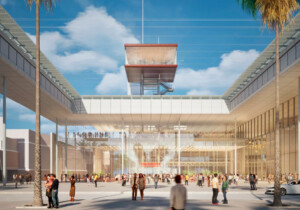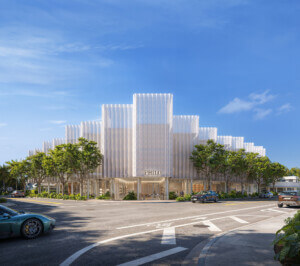Water Street Tampa is a new, 56-acre mixed-use community developed by Strategic Property Partners (SPP) in downtown Tampa, Florida next door to Amelie Arena, home of the Tampa Bay Lightning.
By the numbers, Water Street Tampa constitutes 9 million square feet of new commercial, residential, hospitality, cultural, entertainment, education, and retail uses. In total, SPP invested upwards of $3 billion in the “nabe,” short for neighborhood. Suffolk Construction was responsible for project management and implementation.
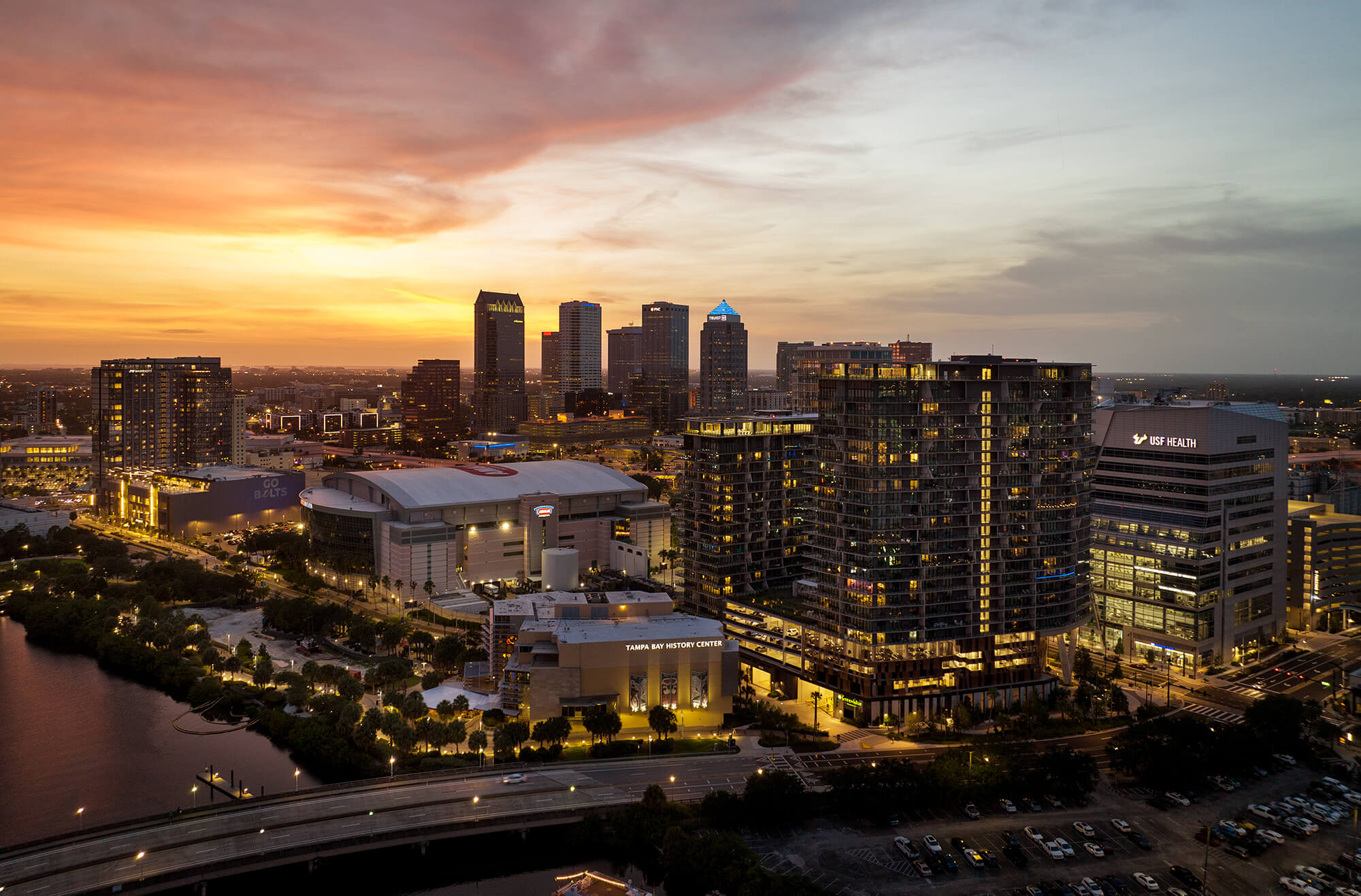
Boston-based Elkus Manfredi Architects designed the master plan for Water Street Tampa. Reed Hilderbrand, a Cambridge, Massachusetts–based landscape architecture firm, was the master landscape architect. Morris Adjmi’s contribution was EDITIONS Hotel & Residences and Asher / ROOST Tampa: a 788,000-square-foot, 22-story, 501-unit building which opened in 2022. At Water Street, as previously reported by AN, Kohn Pedersen Fox (KPF) designed Heron, an 81,000-square-foot residential tower. COOKFOX designed two buildings at the complex: Thousand & One Water Street, a 421,000-square-foot, 20-story biophilic office building; and Cora, a residential tower. The facade of Thousand & One Water Street depicts the natural pattern of a mangrove, which according to the design team, harkens to the design practices used in ancient Greek and gothic architecture and by Louis Sullivan.
Stantec’s Tampa Bay office coordinated infrastructure and roadway improvements. Seven landscape architecture firms worked with Reed Hildebrand to design the 13 acres of public space dispersed throughout Water Street Tampa. These included OBJ, EDSA, Nelson Byrd Woltz, Raymond Jungles, Coen + Partners, Madison Cox Associates, and David Conner + Associates.
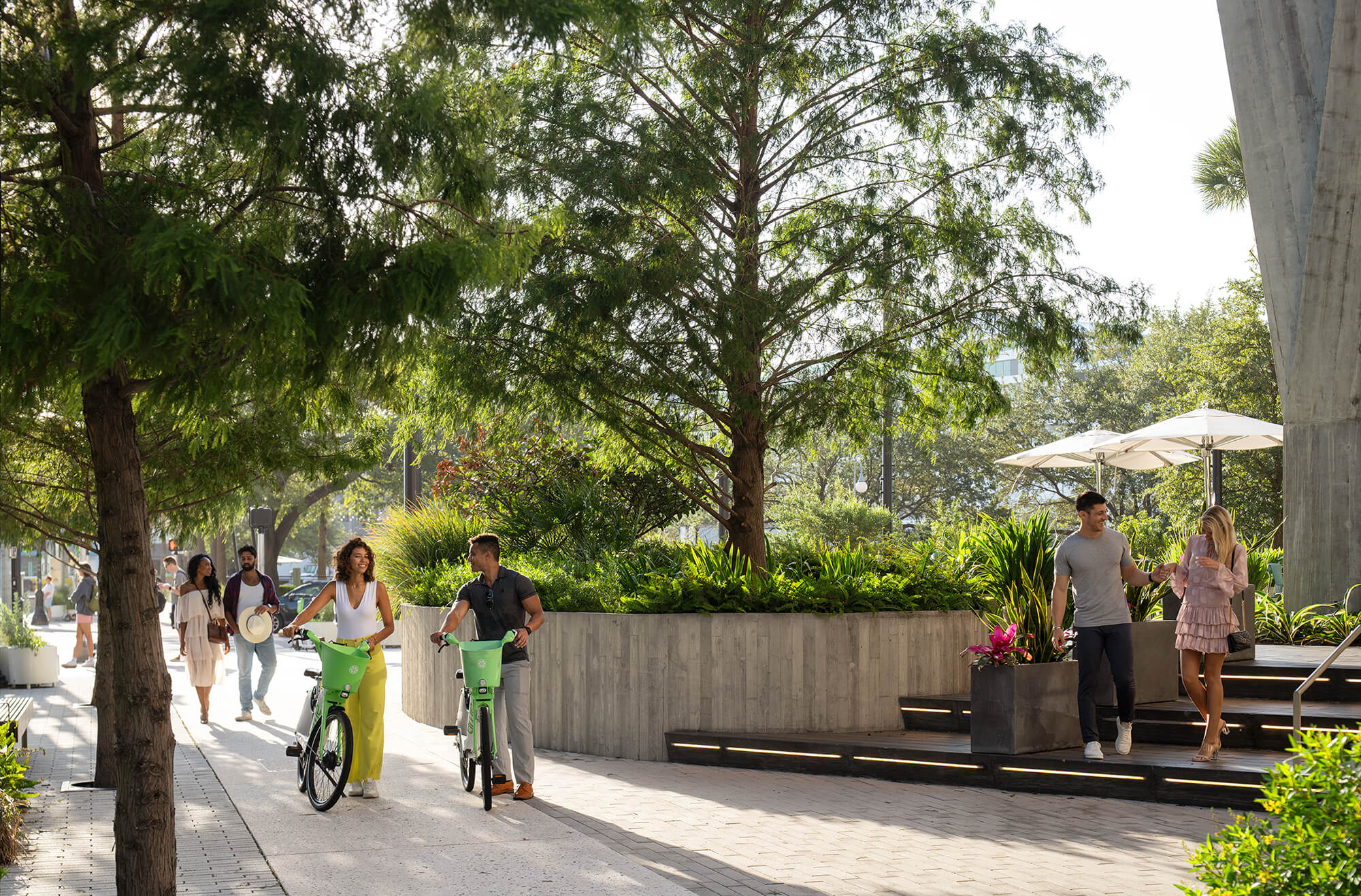
SPP calls Water Street Tampa the “most health-focused neighborhood” in the United States. “When SPP came to COOKFOX, they said they wanted us to create the healthiest, most livable, work-live neighborhood in the country,” said Darin Reynolds, a principal at COOKFOX. Reynolds told AN that designing for health and human wellness isn’t just about ensuring residents have access to clean air. “The way we support health and human wellness is actually through biophilic design,” he said. “We pulled nature into the building with loggias, and provided direct views of gardens and the harbor.”
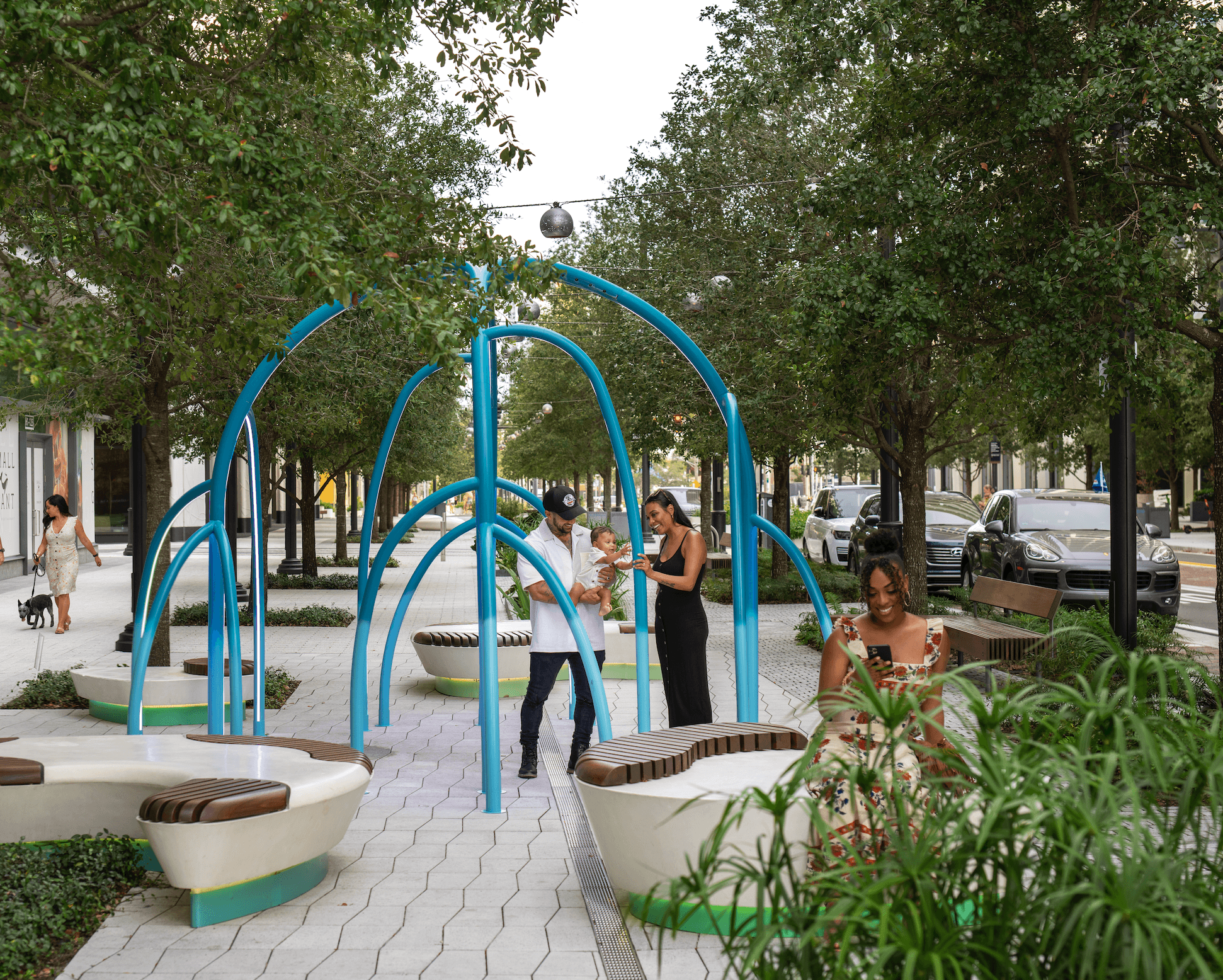
The project’s completion marks the first neighborhood in North America to achieve a WELL Community Certification, an accolade given only to places specifically designed to optimize wellness. To become WELL certified, developers have to pay an upfront $20,000 fee. From there, a series of benchmarks must be met that have to do with the project’s commitment to connecting residents to nature, the building’s carbon emissions, the developer’s commitment to equity, and other wellness metrics. WELL includes an extra certification fee that charges per acre; certification fees are capped at $98,000. The project also achieved LEED certification.
At Water Street Tampa, SPP tore up acres of parking lot to replace it with a new street grid for the megadevelopment to be built. During construction, the team added hundreds of mature, native trees to provide shading, new bike lanes, and double-wide sidewalks to decrease car usage and make for pedestrian-friendly environs. The architects say that the ample amounts of green space promote physical activity while smart streetlights are dimmed at night to support the circadian rhythm for sleepers.
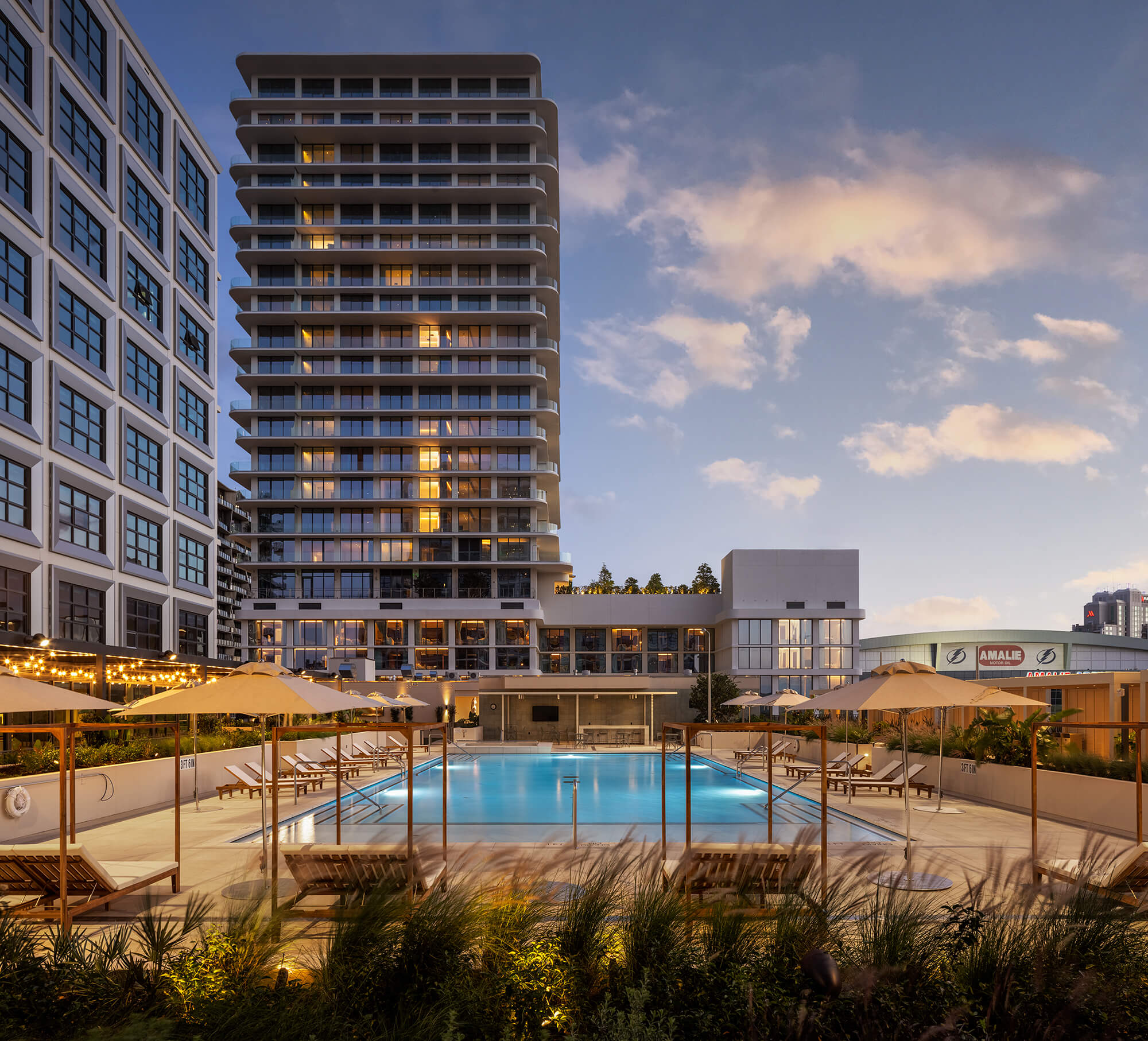
“What excites me about this project is how warm and receptive the city of Tampa has been to it,” Reynolds added. “As soon as the retail spaces opened up, people flocked to it. It used to be when you thought about towns like Tampa, people had been moving away from the urban cores. In this particular project, if you design it well, they will come back.”








